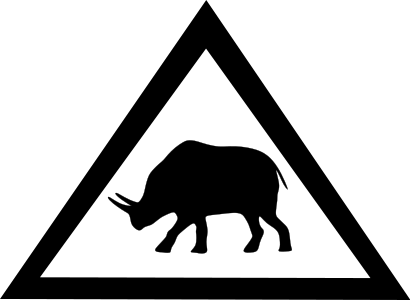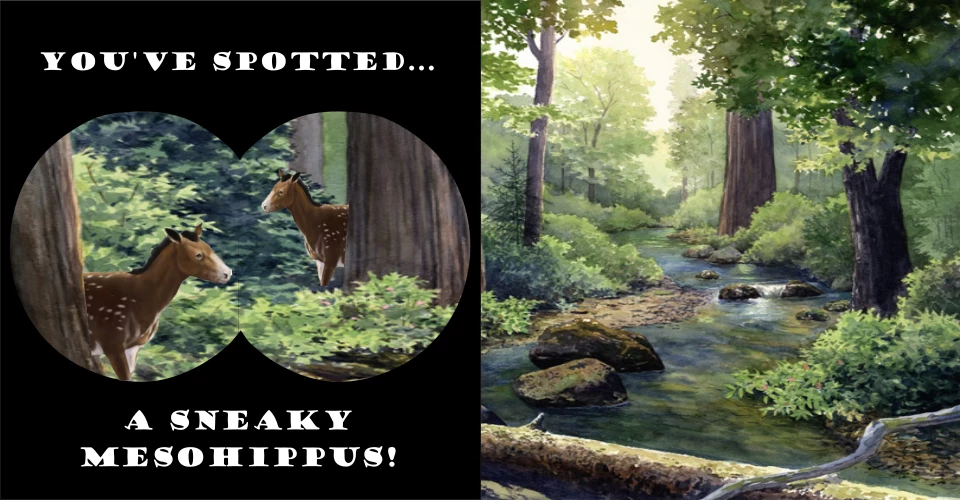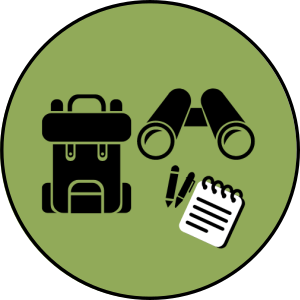
NPS / Astrid Garcia As you venture deeper into the forest, these animals will reveal themselves to you. For help navigating the forest, walk along the stream, which is a source of water for the animals. Following the stream will also take us to the lake where we can see different animals. The next time you're in nature just enjoy a silent moment to listen closely in which you might see activity from even small critters.
In the forest, you come across a calm stream. You're surrounded by tall Redwood trees. As you move the slider to your left, you notice a large creature start to peek out from behind a Redwood as it walks towards the stream to drink water. Take out your binoculars to get a closer view by moving the slider to the right, looking towards the stream. Now, quickly write down what you saw. To get you started, answer these questions. What does the creature look like? What is it doing? Is it alone? Read about this animal using the drop-down below. Something Big is Coming your Way 

Left image
Right image
You decide to cross the stream. You hear a funny noise and turn around to see these small hog-like creatures. Three of them appeared beside the stream walking by. Move the slider to the left to take out your binoculars and take a closer look at these animals. You also begin to hear leaves rustling in the forest. There might be a few more walking nearby, so keep an eye out by moving the slider to the right! Write down what you saw and describe these animals: what color were they, how many were there, how big do you think they were and what were they doing? Read about these animals using the drop-down below. You might need to ruminate a bit on this one and look closely. 

Left image
Right image
You cross the stream one last time, and you're on the side of the forest that is nearest to the lake. You begin to hear the sound of hooves nearby. If you look to the left, you'll notice some small horses peeking out from behind a couple of massive Redwood trees. Move the slider to the left to look at them with your binoculars. As you slowly turn to your right, you notice these animals walking towards the stream. Move the slider to the right to see them move. Write down what you saw and describe these animals: what color were they, how many were there, how big you think they were and what were they doing? Read about these animals using the drop-down below. See something cool? Yay or Neigh? 

Left image
Right image
The stream you were walking along led you to the lake. As you look to the trees... or tree, you notice a small animal clinging to the tree bark. Move the slider to the right to take a closer look. Are you interested in seeing what this animal looks like as a fossil? Move the slider to the left to see this animal preserved in the paper shale. Write down what you saw and describe this animal and fossil: what color is it, how big do you think it is and what was it doing? Read about this animal using the drop-down below. Everything is Awesome... Opossum! 

Left image
Right image

Fossil RiddlesNow that you've read about some of the ancient mammals found here, test your knowledge!Where to next? |
Last updated: April 9, 2022

